Supposedly, the disciples used this method for fishing. Some gladiators used it with tridents in Roman coliseums to catch their prey, and in Norse mythology, the sea giantess Rán used a cast net to capture lost sailors. All news to me. In fact, I had never heard of it – cast net fishing – until recently when we spent time on Tybee Island enjoying a family vacation. My son-in-law bought a Georgia fishing permit, broke out his net and headed to the water after sunset. He came back with several shrimp in a cooler.
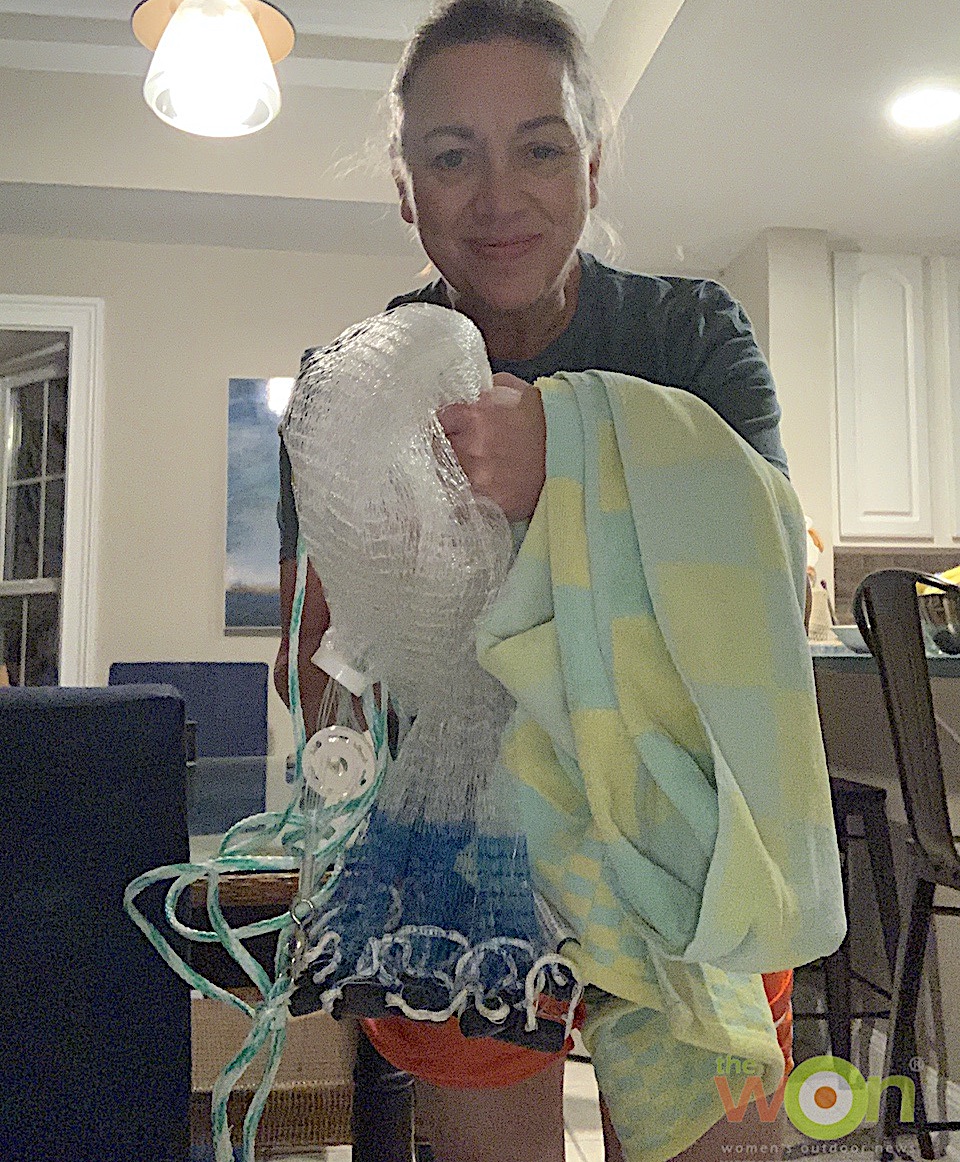
My interested had been piqued. I bought a 4-foot cast net at a local Walmart, purchased a Georgia fishing permit and joined in the fun the next night. Between the 2 of us, we almost caught enough for a low country shrimp boil. Anglers like to use the nets to catch shrimp and small fish for bait purposes.
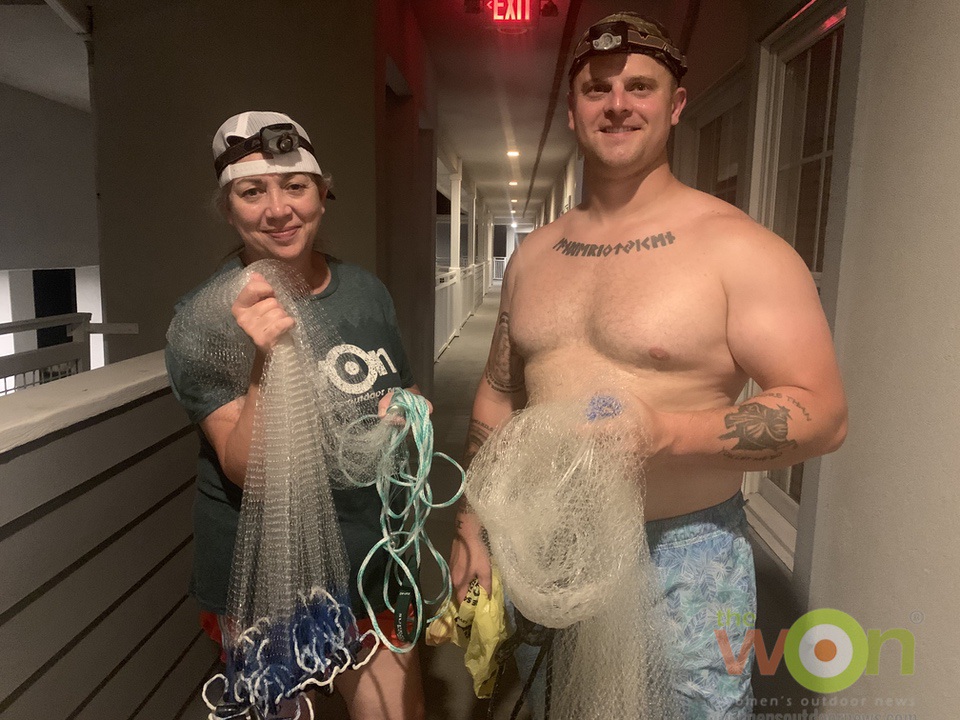
Cast nets range from small to large – from 3- to 14-feet in diameter. Most recreational anglers use 6- to 8-foot nets. The mesh netting (it used to be cotton and linen back in the day) is woven on a loom. Cast nets are measured by height and according to Marlin Magazine website, “Most recreational anglers use cast net sizes measuring 8 feet and under for fishing.” However, the height of the net also is the radius. If you remember your middle school math, that means a 4-foot high cast net will open to diameter of 8 feet.
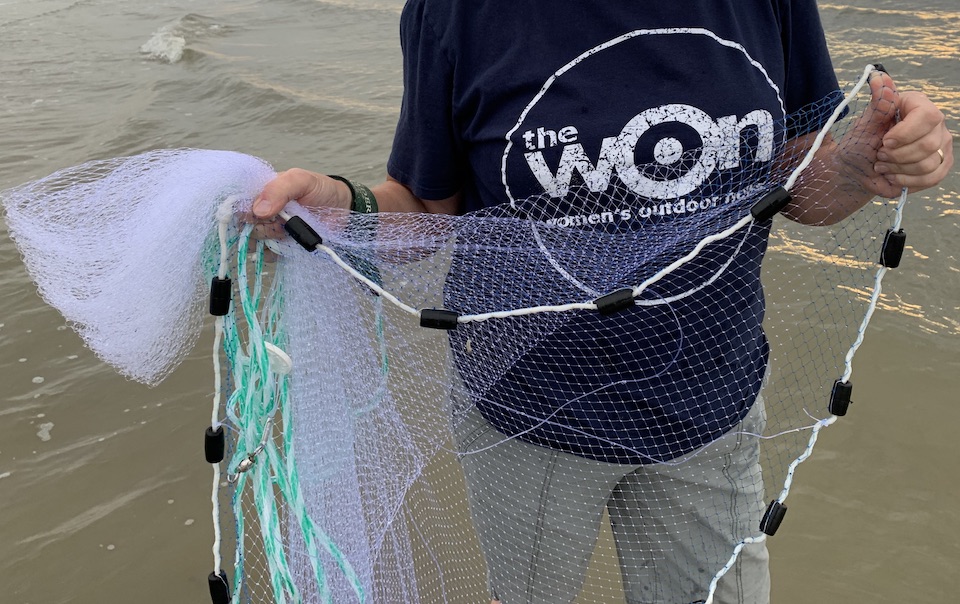
We’ve discussed height and diameter, and construction (clear monofilament). Here are the other components of a cast net:
There are a few methods for casting. Here’s what worked well for me. First, I attached the “Komfort Kuff” to my throwing hand, and then, I gathered the hand line in big loops so that none of the line dangled below the net. I wound the loops around my throwing hand. Then, I gathered up (in 2 loops) about 2/3rds of the net and allowed rest of the net to hang freely. My son-in-law recommended that I take a small piece of the lead line (from the bottom) and drape it up on the wad that was in my hand and hold onto the whole mess with my thumb on my throwing hand. Then, using my other hand (non-throwing), I grabbed about 1/3 of the net closest to my body.
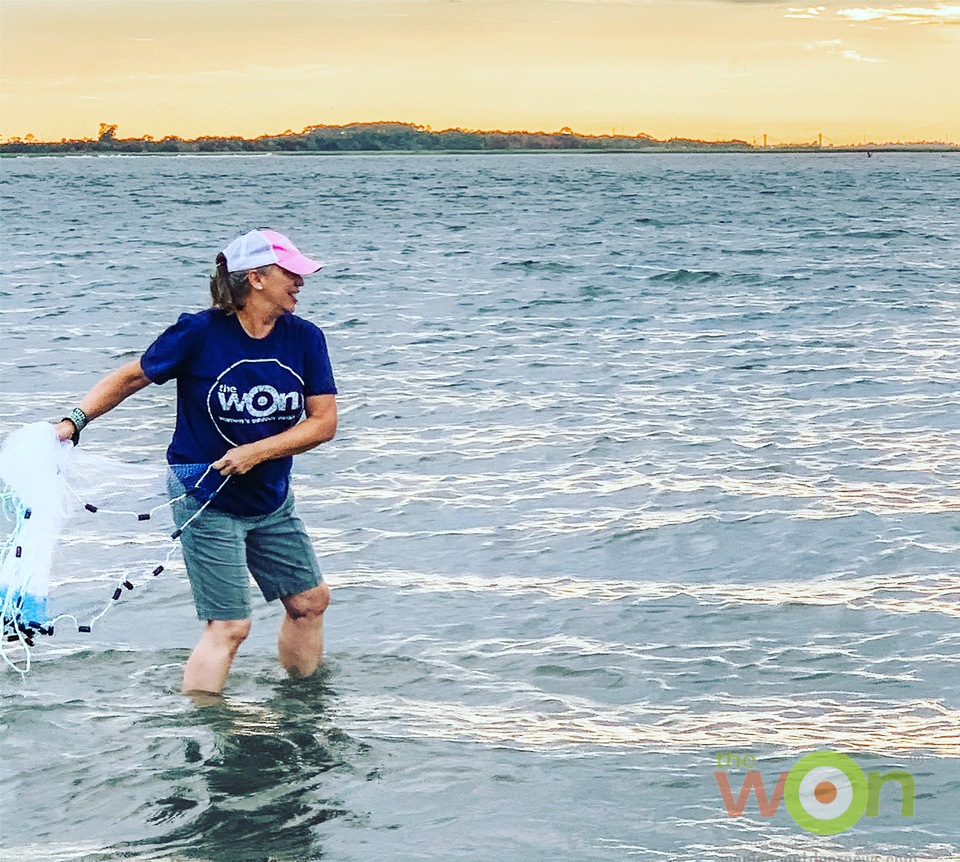
Before I completed the cast, I would search the ocean for speedy shrimp or look for evidence and schools of small fish … then, I would plant my left foot forward and twist both arms back to my right (throwing side) – like getting set up for a 2-handed backstroke in tennis. With eyes on the target ahead, I swung the net back behind me as far as I could comfortably rotate and then, began to move forward with it. That way, I created momentum for the net. I would release the net with my throwing hand after the net came in front of my waistline. I would hold onto the net with my non-throwing hand for a split second longer.
Usually, if I did it correctly, the net opened completely up before it hit the water, forming a beautiful circle somewhere close or on the target I had chosen. Then, I allowed the net to sink (good tip here: work in water no deeper than the radius of your net) and after it would sink, I’d pull up on the hand line and the bottom of the net closed around the catch of the day – which at the most were 3 shrimp.
After closing the net, I brought it up out of the water and to inspect it for shrimp inside. We placed the caught shrimp into a bucket on the beach, which meant lots of walking up and back, up and back.
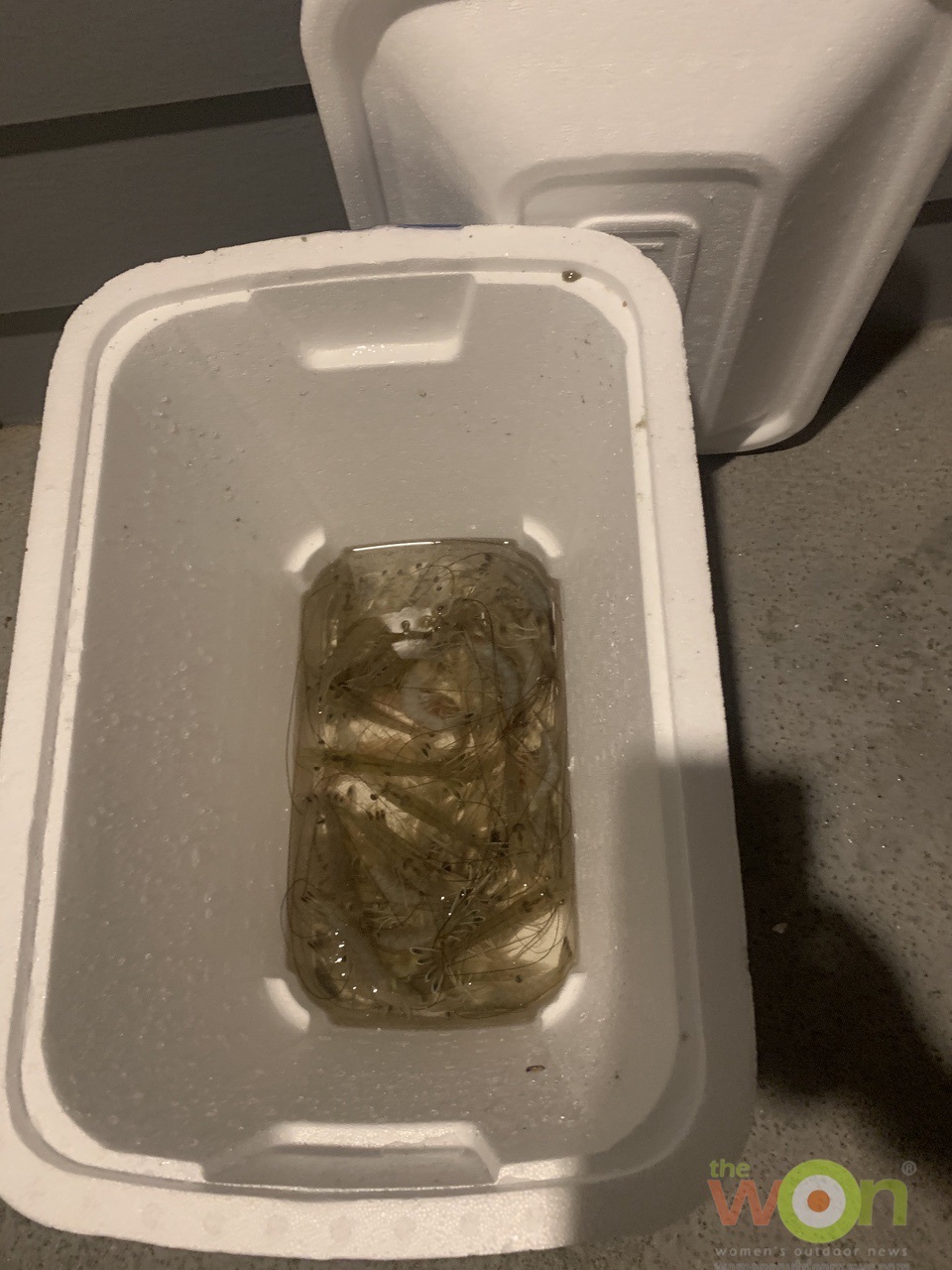
I got into a rhythm after a while. I liked the primitiveness of it, and the hunting aspect. If you go out at night, it helps to wear a headlamp, too, so you can see the fish and shrimp. It makes checking the nets easier, too.
Also, I didn’t realize that shrimp jumped out of buckets, so we quickly found a makeshift lid – my son-in-law’s tee shirt, so we wouldn’t have any escapees.
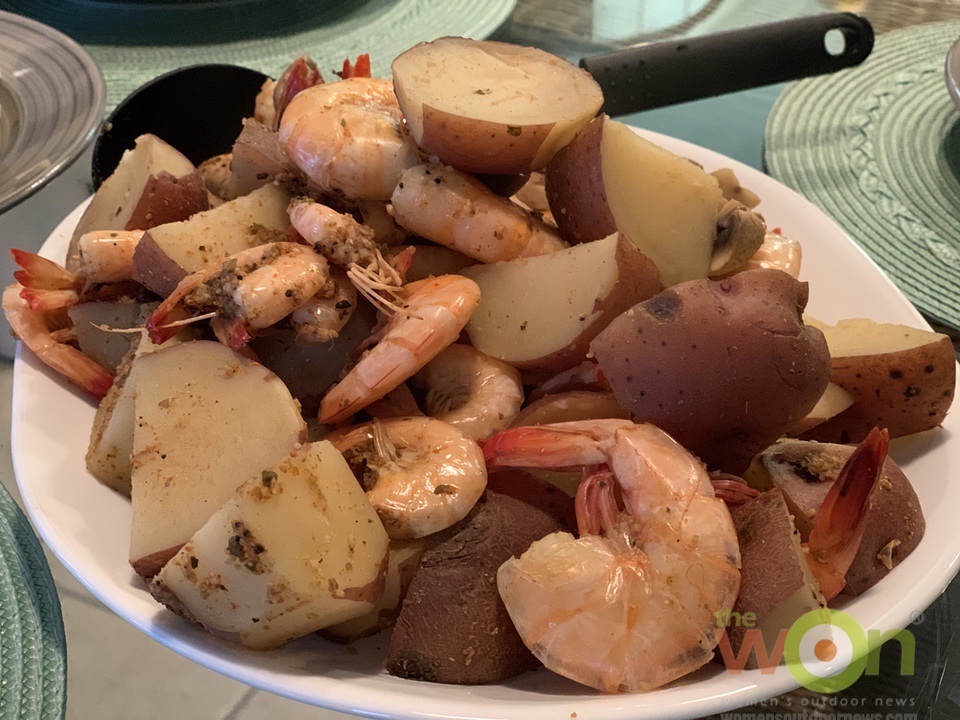
The next evening, we enjoyed the fruits of our fishing labors, when we served up a low-country shrimp boil, and only had to buy a few extra shrimp at the local fish market.
Publisher/Editor Barbara Baird is a freelance writer in hunting, shooting and outdoor markets. Her bylines are found at several top hunting and shooting publications. She also is a travel writer, and you can follow her at https://www.ozarkian.com. View all posts by Barbara Baird